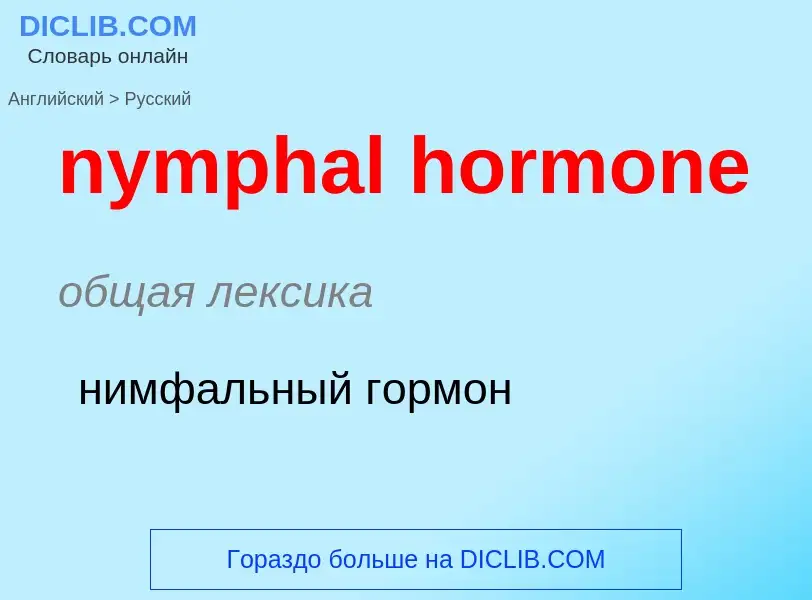Übersetzung und Analyse von Wörtern durch künstliche Intelligenz ChatGPT
Auf dieser Seite erhalten Sie eine detaillierte Analyse eines Wortes oder einer Phrase mithilfe der besten heute verfügbaren Technologie der künstlichen Intelligenz:
- wie das Wort verwendet wird
- Häufigkeit der Nutzung
- es wird häufiger in mündlicher oder schriftlicher Rede verwendet
- Wortübersetzungsoptionen
- Anwendungsbeispiele (mehrere Phrasen mit Übersetzung)
- Etymologie
nymphal hormone - Übersetzung nach russisch
общая лексика
нимфальный гормон
медицина
высвобождающий гормон соматотропного гормона
общая лексика
соматолиберин
фактор
стимулирующий выделение гормона роста
Wikipedia
Anti-Müllerian hormone (AMH), also known as Müllerian-inhibiting hormone (MIH), is a glycoprotein hormone structurally related to inhibin and activin from the transforming growth factor beta superfamily, whose key roles are in growth differentiation and folliculogenesis. In humans, it is encoded by the AMH gene, on chromosome 19p13.3, while its receptor is encoded by the AMHR2 gene on chromosome 12.
AMH is activated by SOX9 in the Sertoli cells of the male fetus. Its expression inhibits the development of the female reproductive tract, or Müllerian ducts (paramesonephric ducts), in the male embryo, thereby arresting the development of fallopian tubes, uterus, and upper vagina. AMH expression is critical to sex differentiation at a specific time during fetal development, and appears to be tightly regulated by nuclear receptor SF-1, transcription GATA factors, sex-reversal gene DAX1, and follicle-stimulating hormone (FSH). Mutations in both the AMH gene and the type II AMH receptor have been shown to cause the persistence of Müllerian derivatives in males that are otherwise normally masculinized.
AMH is also a product of granulosa cells of the preantral and small antral follicles in women. As such, AMH is only present in the ovary until menopause. Production of AMH regulates folliculogenesis by inhibiting recruitment of follicles from the resting pool in order to select for the dominant follicle, after which the production of AMH diminishes. As a product of the granulosa cells, which envelop each egg and provide them energy, AMH can also serve as a molecular biomarker for relative size of the ovarian reserve. In humans, this is helpful because the number of cells in the follicular reserve can be used to predict timing of menopause. In bovine, AMH can be used for selection of females in multi-ovulatory embryo transfer programs by predicting the number of antral follicles developed to ovulation. AMH can also be used as a marker for ovarian dysfunction, such as in women with polycystic ovary syndrome (PCOS).


